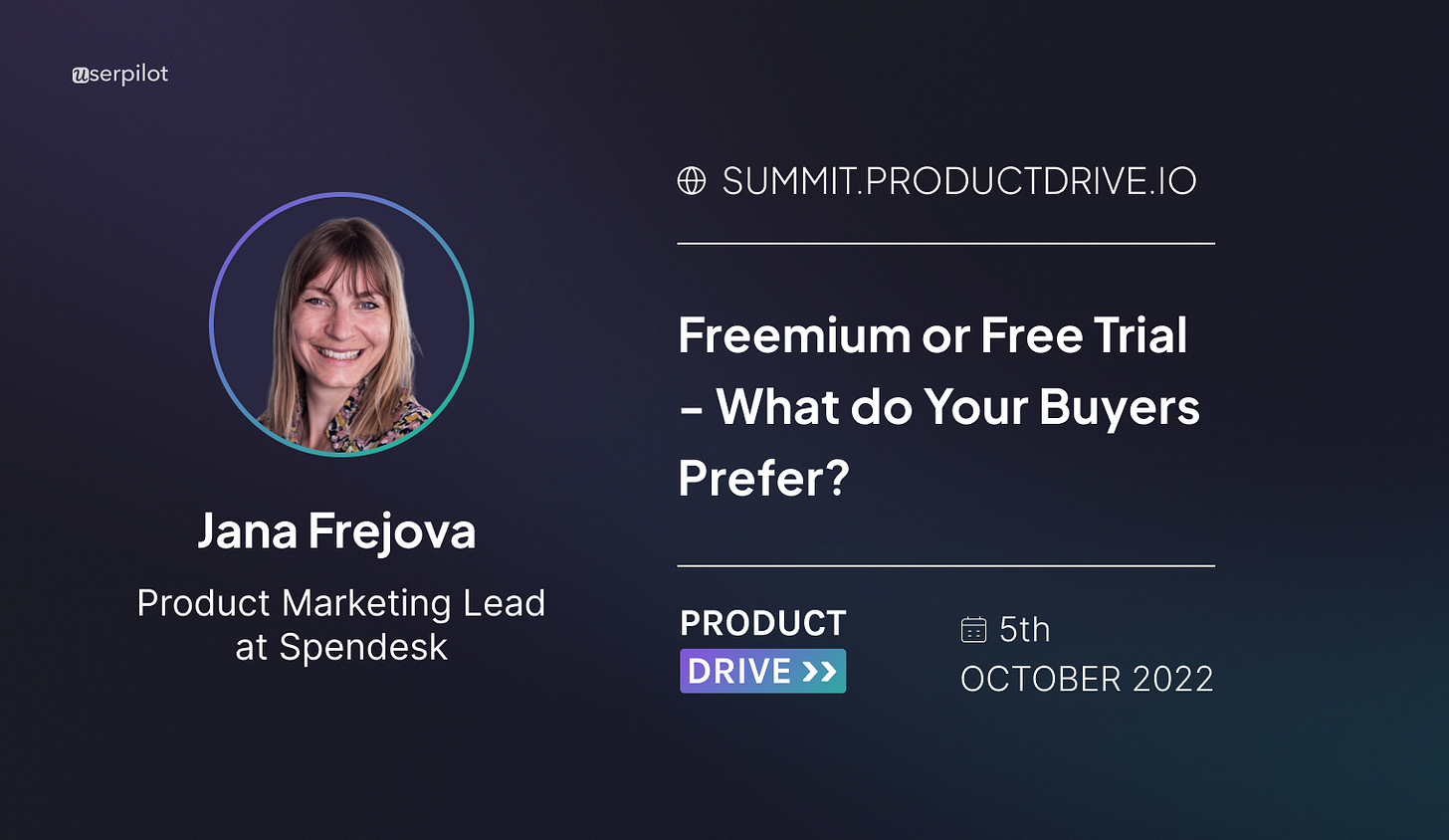The Saassy guide to choosing the one: free trial or freemium?
Going product-led implies choosing between freemium, free trial - or a mixture of both. The choice leads to different business models with different pricing approaches, audiences, product packaging, complexities, and go-to-market strategies. So how do you decide?
In this blog, we will go through six key questions to help you with that choice.
What are we talking about?
Both free trial and freemium are acquisition strategies, incentivising a prospect to try out a product because they get some value for free with the ultimate goal of converting them into paying customers. They differ in where they place limits on what the prospect can try:
Free trial gives users a partial or full access to the product for free for a limited period of time (typically 2-4 weeks);
Freemium provides free access to the product indefinitely but limits at least of one of the following: feature scope, usage (e.g., the famous Zoom 40 minutes meeting cut-off), customer support (hello, user communities), or adds barriers that don’t impact the core value (like ads, branding or watermarks).
Some companies use a mixture of the two. Some use freemium as the baseline with a free trial as an upgrade path to paying options; others start with a free trial and then move to a freemium.
The outcomes of free
People rave about both freemium and free trials because they open up to the top of the funnel to more prospects compared to sales-led, tend to lower CAC by building a pipeline of prospects with higher intent, scale faster as they are not constrained by long sales cycles or sales hiring, and often employ powerful growth levers that are self-perpetuating.
Freemium drives more leads and sign ups than free trial, but has a lower conversion rate to paid customers. On average, a freemium generates twice as many free accounts per website visitor as free trial. But because freemium can run indefinitely, there’s no sense of urgency driving users to convert. The median free-to-paid conversion rate for freemium is 5% compared to 17% for free trial. This means that for every 1,000 visits to the website:
A typical freemium would lead to 60 free sign-ups (6% web to signup conversion rate), which would turn into 3 paying customers (5% free to paid conversion rate).
A typical free trial would lead to 30 free sign ups (3% web to signup conversion rate), which would turn into 5.1 paying customers (17% free to paid conversion rate).
(Source: Openview partners, OpenView 2022 Product Benchmarks Survey)
The six questions to help you choose
Your decision whether to go with free trial or freemium has many angles - it has to be right for your business, your product, and your audience.
There’s no shame in sticking with sales-led book-a-demo if that’s the right fit for your business - in fact, many companies have tried freemium and reverted to sales-led approach when it didn’t work for them. But if you can make it work - boy, get ready for a rapid growth.
#1: Which user segment are you after?
In his MOAT framework, Wes Bush aligned each market strategy with a specific version of free, based on who you are planning to target:
Everyone (the dominant market strategy): you do something much better than the market but at a lower price (e.g., Uber).
→ Both free trial and freemium workThe overserved (the disruptive market strategy): you focus on “over-served” customers by offering a simpler, easy-to-use product at a lower price (e.g., Canva vs Adobe, Google Docs vs Microsoft Word).
→ FreemiumThe underserved (the differentiated market strategy): your product does a specific job better and at a higher price than your competition for customers underserved by generic solutions. Because the market is smaller and the product is more complex, this is not a good fit for freemium.
→ Free trial
#2: What complexity and learning curve can your user handle?
Because freemium is about opening up the top of the funnel to a maximum amount of leads, it has to be super simple to understand and easy to use for everyone. A user should “get” the product in seconds - otherwise it creates friction, killing your conversion rate.
On the other hand, because free trial tends to target a smaller market or specialist software, users may be more familiar with the type of solution, being able to handle products with somewhat higher learning curve or complexity.
Low complexity → freemiumLow to medium complexity → free trialMedium to high complexity → go back to demo#3: Can you technically and financially support free users?
Freemium can (ideally) lead to an influx of free accounts for an unlimited period of time, which, in turn, may:
Increase your operating and technical costs: Chris Anderson puts forward a rule of 5% - can 5% of your premium customers support the remaining 95% of free users? (Free: The Future of a Radical Price)
Impact the overall performance of your product: Baremetrics’ freemium was so successful it almost made them “implode”. The influx of free accounts impacted performance of their product and drained support resources, leading to rapid churn of paying customers.
Increase the pressure on your support teams: it is no coincidence that the rise of product-led growth led to adoption of user communities, and that a vast majority of freemium plans have very limited support.
In fact, many companies cite costs and affordability as the mean reason why they went with free trial over freemium.
Freemium has the potential to open up your user acquisition funnel significantly, which also makes it expensive. Chances are, your freemium will attract a lot of users that will never upgrade, and your financial model should support this additional load while still benefiting from freemium as a profitable acquisition channel.
I can afford it → freemiumI cannot afford it → free trial#4: Is your target user willing to pay … eventually?
Sometimes, freemium ends up attracting the wrong type of user - companies that are too small and whose needs are perfectly covered by the freemium package, never necessitating them to upgrade to a paid plan.
Chargebee’s original offer of ten free invoices a month attracted small consulting companies that never converted. Chargebee stuck with freemium - but limited its free plan to the customer's first $50k in revenue (link). Chargify’s and Conversocial’s freemium ended up also targeting small companies whose needs were fully met by the free package. Unlike Chargebee, no matter what tweaks they tried to freemium, it didn’t work, and both companies reverted to a sales-led model with a book a demo.
#5: What do your target users care about?
Freemium and free trials are ideal for bottom up approaches, i.e., targeting end users (although in some cases, free trials could work for top-down too). This is because freemium and free trials demonstrate the values and aspects of the product the user cares about.
Some end users just want to solve a simple pain point, such as I hate scheduling meetings (Calendly). For them, freemium is the right fit. There are also end users with more specialised needs. Depending on the solution, for these users a free trial or demo may be a better fit as they need to have access to the entire offering, or be able to ask an expert.
I looked at [company with freemium] but their freemium put me off because they wanted me to try it before I could talk to someone. Our complexity and uncertainty if the solution would meet my needs made me think freemium would be a waste of time.
From a user interview
On the other hand, focusing on decision makers requires demonstration of a different set of values that cannot be demonstrated by free offerings, such as:
ROI: that is hard to demonstrate with a time-limited free trial or limited set of features offered by freemium.
Scalability: “Free trial or freemium is not relevant because we needed software that could be implemented at large scale and you cannot tell that from a free trial. Free trial is just to see simplistic processes.” (user interview)
End users with simple pain points → freemium or free trialEnd users with specialised needs → free trial or demoDecision-makers → demo#6: How many users can you target?
Jason Lemkin calculated that you need about 50 million active users to make freemium work as a business model (i.e., get to the US$100M ARR), assuming 2% conversion from free to paid and monthly price of US$10/user. There are companies with much higher conversion rates or price points but they still require a large user base. For example, Dropbox needed 600 million free users to build its US$2B ARR; Wix has 154M free users generating US$1B ARR.
Large TAM → freemiumTo sum up
Go with freemium if..
Dominant or disruptive market strategy
Low complexity and learning curve
Can afford it financially & technically
End user with simple needs
Large market
Go with free trial if..
The differentiated market strategy
Low to medium complexity & learning curve
Can’t afford it financially & technically
End user with specialised needs
Any market size
What’s next?
I am speaking on this topic at the Product Drive conference in October. Dial in!






